Welcome to my comprehensive guide on the best cat litter box for your feline friend! While the ideal litter box ultimately depends on your cat’s preferences and needs, this guide will help you make an informed decision.
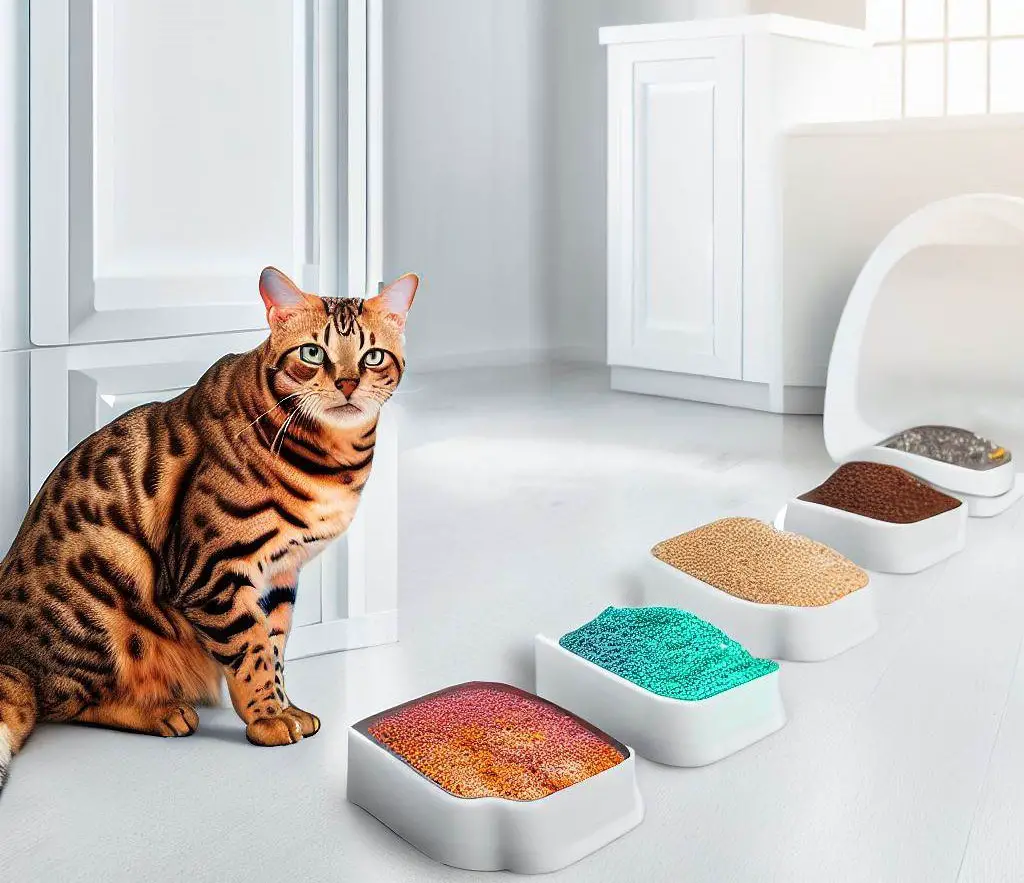
Dive in to explore various types of litter boxes, their pros and cons, and expert tips to ensure your cat enjoys a comfortable and hygienic experience.
So what’s the best type of litter box? Most cat butlers will probably be satisfied with a hooded or covered litter box without swinging doors. However, you may want to keep reading if you or your cat have other special needs or requirements!
Cat Litter Box Types: Pros/Cons
As a cat owner, you know that finding the best type of cat litter box is crucial for maintaining a clean and odor-free home. With so many options on the market, choosing the perfect one for your feline friend can be overwhelming.
In this comprehensive guide, we’ll explore the top cat litter boxes, backed by scientific references, and provide additional tips to make your cat’s litter box experience as pleasant as possible.
Additionally, the recommendations here will be for clumping litter, clay, tofu, or other clumping pellets, as it is the most popular.
| Type of Litter Box | Pros | Cons |
|---|---|---|
| Traditional Open Litter Box | – Easy to clean and maintain – Inexpensive (can even use a cardboard box!) | – Lacks privacy for the cat – More prone to odor and litter spillage |
| Covered Litter Box | – Moderate containment of odors – Reduces litter spillage and tracking – Offers privacy | – Some cats may feel trapped or claustrophobic – Swinging doors can cause a concentration of bad odors within the box |
| Top-Entry Litter Box | – Contains odors better than open litter boxes or covered litter boxes – Reduces litter tracking – Offers privacy | – Mostly only suitable for healthy adult cats – Some cats may feel trapped or claustrophobic |
| Automatic Litter Box | – Lower daily maintenance – Can be more hygienic for both the cat and the owner – Can have more control via apps | – Expensive – Some cats may be frightened by the noise and movements – Requires a power source – May be challenging to deep-clean |
The Traditional Open Litter Box: Cheapest & Quickest to Setup
The most common type of litter box is the open design, which is essentially a rectangular tray filled with cat litter.
The traditional open litter box is ideal for those seeking affordability, easy cleaning, and low maintenance, and it suits cats that enjoy open spaces and need little privacy.
This option is perfect for first-time cat owners who prefer a simple, cost-effective solution before trying other litter box types.
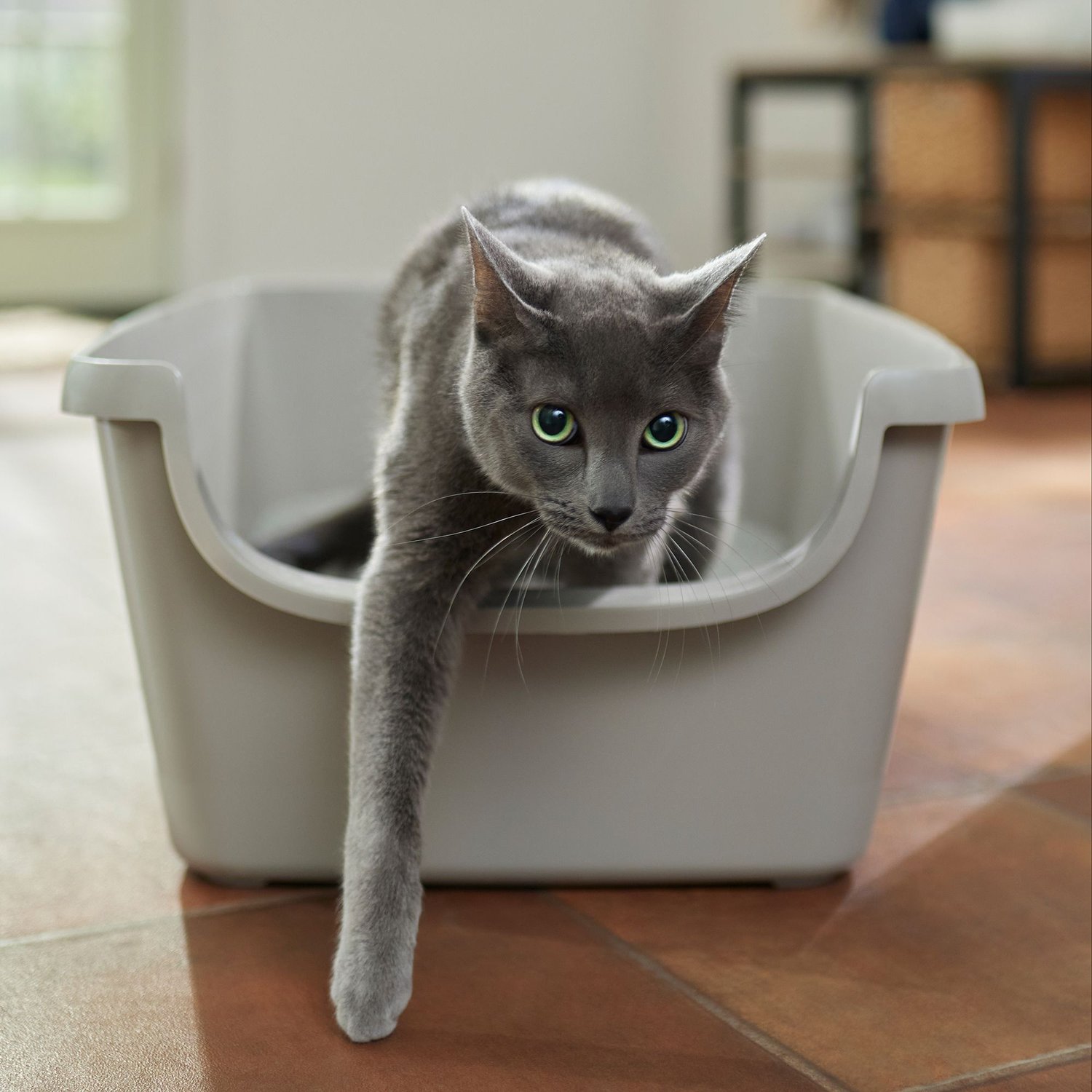 Frisco High Sided Cat Litter Box, Extra Large 24-in
Frisco High Sided Cat Litter Box, Extra Large 24-in
Discover Chewy's eco-friendly Frisco Litter Box, designed with high sides to minimize litter scatter and spray. Its easy-access, step-in front entry and open design allow for simple cleaning, while the spacious, BPA-free, recyclable plastic construction suits both cats and eco-conscious pet parents.
Covered Litter Boxes: Well-Balanced
Covered litter boxes provide a more private space for your cat to do their business. These boxes usually feature a removable lid or a hinged door for easy access and cleaning. Some research indicates cats may prefer covered litter boxes due to their increased sense of security.
Covered or hooded litter boxes are ideal for those valuing cat privacy and odor and litter spillage control. They suit people with multiple cats, tiny homes, or apartments.
Aesthetically pleasing designs blend with home decor. Note: a lot of covered litter boxes come with swinging doors at the entrance of the litter box. While it is better for containing odors, it actually becomes a detriment because it concentrates the odors too much in the litter box, which can lead to litter box avoidance.
For more on covered VS uncovered litter boxes, read here!
 Jumbo Covered Cat Litter Box
Jumbo Covered Cat Litter Box
Introducing the Frisco Covered Litter Box by Chewy—a sleek, eco-friendly solution for your cat's privacy. With high walls and a covered top, it contains spray and scatter while offering an easy entrance for your kitty. Cleanup is a breeze with a detachable scoop holder and removable lid.
Top-Entry Litter Boxes: Much Lower Litter Tracking
Top-entry litter boxes feature a hole in the lid, requiring the cat to enter and exit from the top. This design helps minimize litter tracking and offers increased privacy. While there is limited research on top-entry litter boxes, anecdotal evidence suggests that many cats easily adapt to this style.
Top-entry litter boxes are perfect for minimizing litter tracking and maintaining cleanliness. They’re suitable for limited spaces and provide privacy with a more discreet, modern look. However, consider the cat’s physical capabilities, as it may not suit those with mobility issues or difficulty adapting.
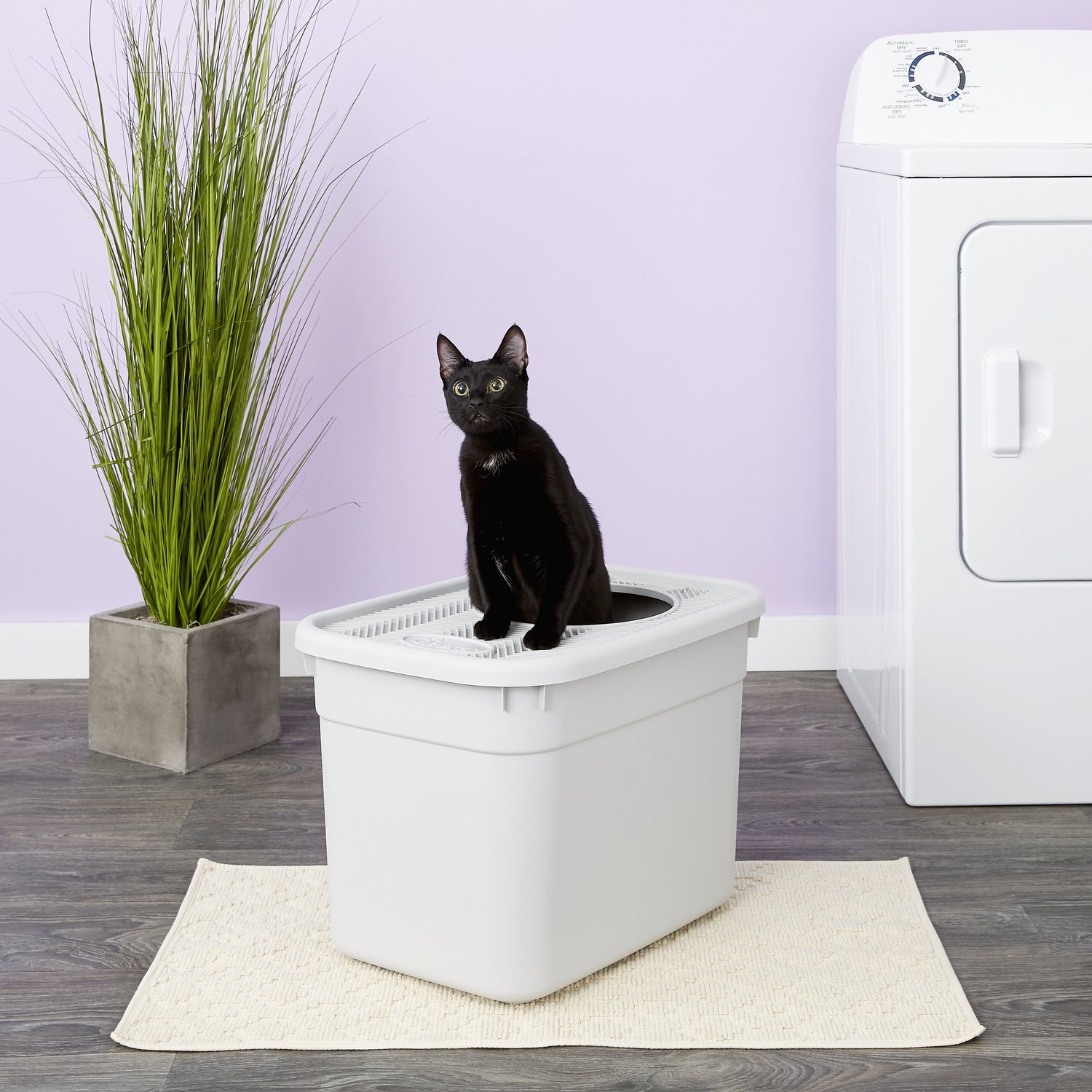 Clevercat Top-Entry Litter Box
Clevercat Top-Entry Litter Box
Experience a cleaner home with the Clevercat Top-Entry Litterbox, featuring a spill-reducing design that minimizes tracking and odor. Ideal for diggers and multi-pet households, cats enjoy added privacy with no training needed. Note: not suitable for disabled, elderly, or very large cats.
Automatic Self-Cleaning Litter Boxes: No More Scooping
Self-cleaning litter boxes have been a hot trend recently, and every year, more companies are making promises to make scooping more convenient for cat owners.
These litter boxes typically use sensors or timers to rake through the litter and collect waste in a separate compartment. Although there is limited research on the effectiveness of these litter boxes, their popularity among cat owners speaks to their efficiency.
A self-cleaning or automatic litter box would be the best fit for individuals seeking convenience and low-maintenance solutions to clean their cat’s litter area.
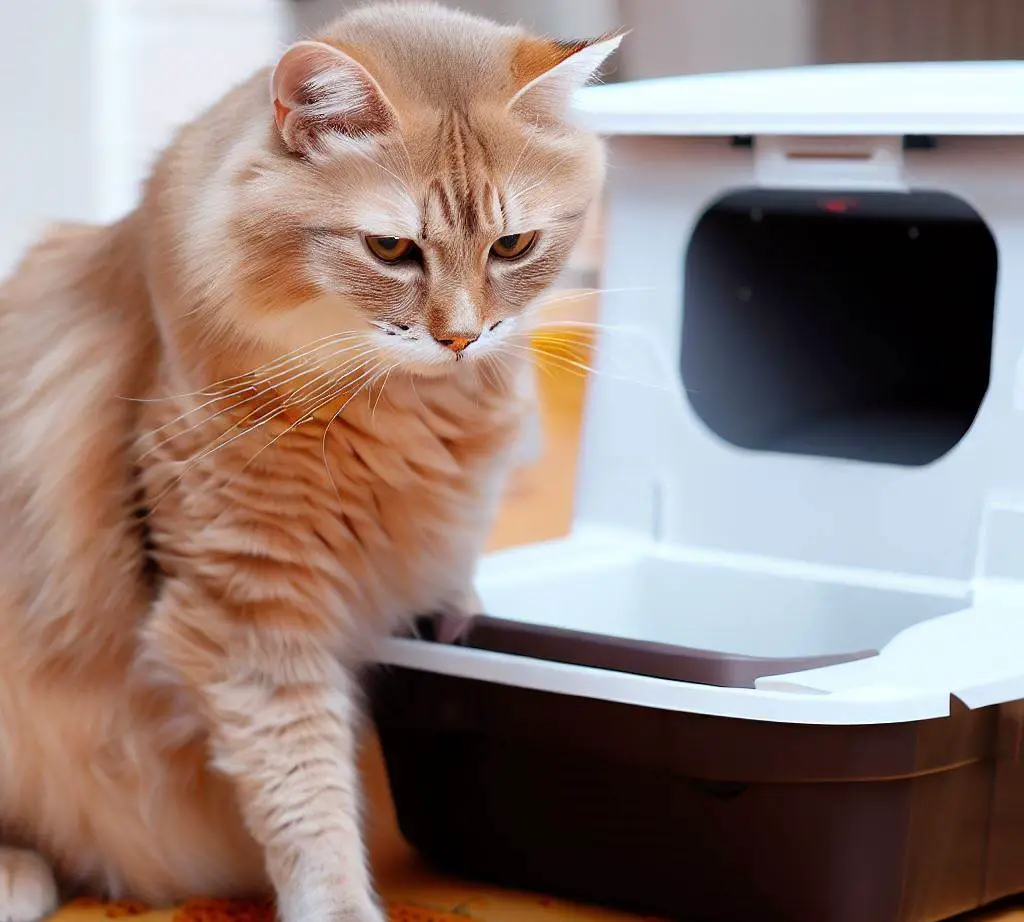
This type of litter box is ideal for busy cat owners, those with multiple cats, or people with limited time or physical ability to clean the litter box frequently. It’s also suitable for those who want to reduce odors and maintain a more hygienic environment for their cat and themselves.
However, potential buyers should be prepared to invest more upfront, as self-cleaning litter boxes tend to be more expensive. Additionally, it’s essential to consider whether the cat will be comfortable with the noise and movements of an automatic litter box, as some cats may be frightened or disturbed by these features.
Important Things to Note
- Self-cleaning litter boxes only work with specific types of litter.
- It may not effectively remove all waste and will need a deep cleaning once a month for maintenance.
- Automatic self-cleaning litter box products live and die by their customer service. These devices are large and contain many sensors and moving parts, and any malfunctions or repairs will require you to contact their service centers.
Thus, it’s best to choose a reputable brand and company that has a history of doing right by its customers. Below is my recommendation.
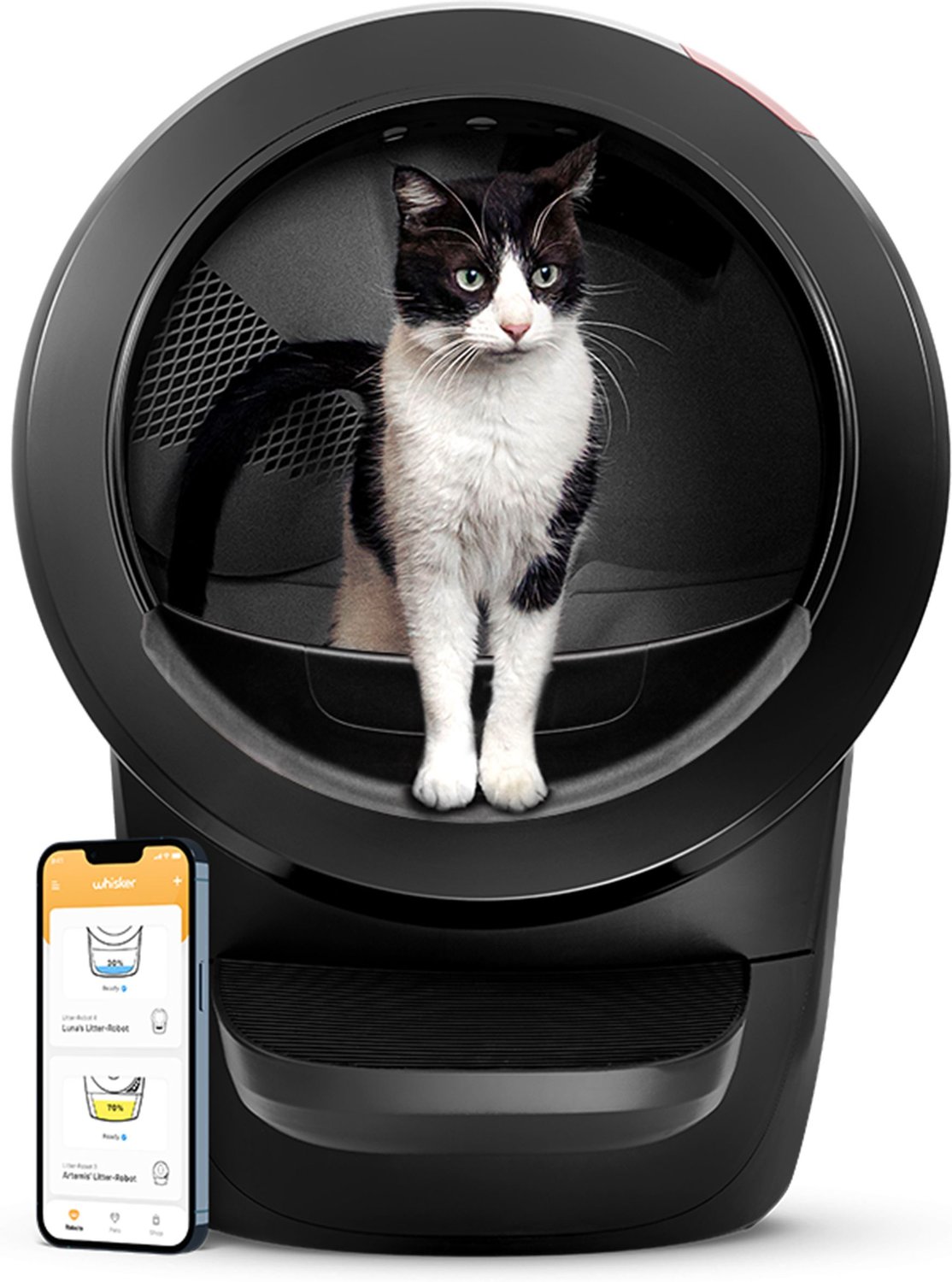 Litter-Robot 4 Automatic Self-Cleaning Cat Litter Box
Litter-Robot 4 Automatic Self-Cleaning Cat Litter Box
Upgrade to the Whisker Litter-Robot 4 w/Step Cat Litter Box and say goodbye to scooping! This automatic, self-cleaning box neutralizes odors, minimizes tracking, and monitors usage via the Whisker app. Enhanced safety features and a QuietSift cycle ensure a comfortable experience for up to four cats. Most dependable automatic litter box.
Litter Box Avoidance: Before You Buy a New Litter Box
If you’re dealing with your cat having trouble using the litter box and looking for a new one, start reflecting upon your cat’s condition and the current environment before buying a whole new litter box.
Buying a whole new litter box just to find out that your cat still refuses to use it can cause frustration for you and your cat.
Here are a few things you can do before doing a complete litter box change:
- If you think your litter box is too small, then try using a temporary larger cardboard box litter box.
- If you think that your cat is having trouble accessing the litter box, cut an opening for easier access.
- If you think that having a swinging door or a covering might be concentrating the smells to where your cat is put off by the litter box, remove it.
Additional Tips for Cat Owners
- Size Matters: The size of the litter box is essential for your cat’s comfort. A good rule of thumb is to choose a litter box that is at least 1.5 times the length of your cat.
- Litter Type (Which is the best type of litter?): The type of litter you use can impact your cat’s litter box usage. Research has shown that most cats prefer unscented, clumping litter. However, it’s essential to experiment with different types of litter to find the one your cat likes best.
- Location, Location, Location: Place the litter box in a quiet, low-traffic area of your home. The litter box is a huge scent/territorial market for cats. Therefore, the location has huge sways on your cat’s litter box behavior.
- Multiple Litter Boxes: If you have multiple cats, provide at least one litter box per cat, plus one extra. This ensures that each cat has access to a clean box and reduces territorial disputes.
- Cleanliness is Key: Maintain a clean litter box to encourage your cat to use it. Scoop waste daily, and wash the box with mild soap and water at least once a month. Avoid strong-smelling cleaning products, as they can deter your cat from using the box.
- Gradual Introduction: If you’re transitioning to a new type of litter box, introduce it gradually. Place the new box next to the old one for a few days, allowing your cat to explore and become familiar with it. Once your cat starts using the new box, you can remove the old one.
The Litter & Litter Box I Use
Those that have visited my blog or youtube channel know that I have used pine litter for years and will likely never switch (until someone makes an automatic litter box for pine litter specifically).
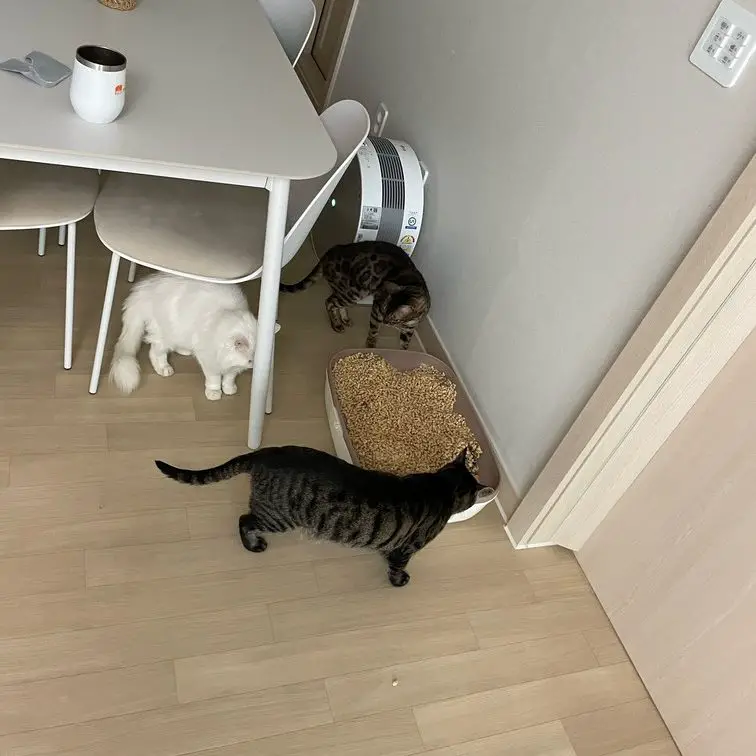
Why? Not only is pine litter environmentally friendly, but it has solved the dust and litter tracking issues that I have been having problems with since the beginning of my cat butler journey.
It was especially helpful when I was living in a tiny apartment with my cats.
However, it’s crucial to consider your cat’s preferences and gradually introduce the new litter to ensure a smooth transition. Luckily, I have the full guide on how to transition to pine litter.
 Purina Tidy Cats Hooded Litter Box System
Purina Tidy Cats Hooded Litter Box System
This litter box kit contains some pads and pellets (don't use them). I recommend just putting away the pellets that they give you and get pine litter. Pine litter works very well with this litter box and it's very easy to clean.

The Russian Blue who lives with me (Jules) seems to prefer micro crystal litter, and I think it handles odors well. Jules’s cat bed is made from a tree with two woven baskets, an enclosed hidden bed and scratching posts. She’s had it for two years and it’s still intact (yes, she’s large and muscular). P.S. She’s brilliant; she wakes me up every morning at approximately 7:30..never fails.